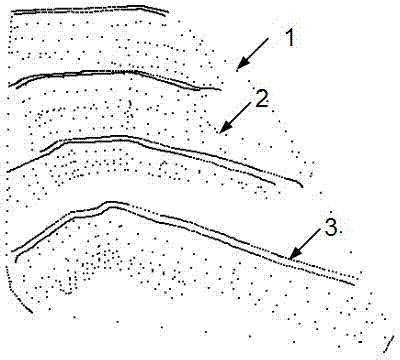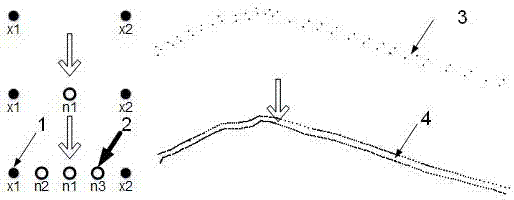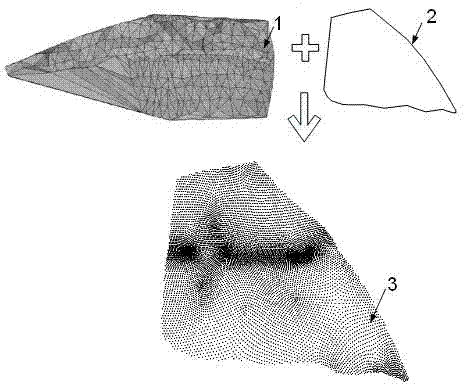Graph cut method for contrasting filled and excavated space by using three-dimensional triangulation network
A technology of triangulation and space, applied in the field of 3D modeling, can solve the problems of precision influence, inability to build, complex reality model, etc., achieve high precision and avoid decomposition
- Summary
- Abstract
- Description
- Claims
- Application Information
AI Technical Summary
Problems solved by technology
Method used
Image
Examples
Embodiment Construction
[0029] The present invention is a three-dimensional triangulation network construction method based on Delaunay tetrahedron and graph cut method, and the technical process is as follows Figure 6 shown. Use the original terrain scatter points and real terrain scatter points to decompose the space into a Delaunay tetrahedron. The vertices and directed edges of the dual graph of the Delaunay tetrahedron (that is, the Voronoi graph) correspond to the vertices and directed edges in the s-t graph, and the vertices represent Delaunay In a tetrahedron, directed edges represent triangular faces with directions. We regard the calculation problem of filling and excavating space as the minimization of energy function. The energy function includes the normal vector energy item and the triangle area energy item. According to the normal vector information and the triangle area information, the weight of the s-t graph is added. The solution process is to find the s-t graph The minimum cut o...
PUM
 Login to View More
Login to View More Abstract
Description
Claims
Application Information
 Login to View More
Login to View More - Generate Ideas
- Intellectual Property
- Life Sciences
- Materials
- Tech Scout
- Unparalleled Data Quality
- Higher Quality Content
- 60% Fewer Hallucinations
Browse by: Latest US Patents, China's latest patents, Technical Efficacy Thesaurus, Application Domain, Technology Topic, Popular Technical Reports.
© 2025 PatSnap. All rights reserved.Legal|Privacy policy|Modern Slavery Act Transparency Statement|Sitemap|About US| Contact US: help@patsnap.com



